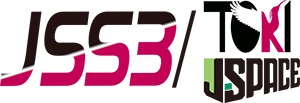A neural network study of the nonlinear evolution dynamics in a planetary atmosphere: large-scale vortex and the governing equation
JAXA Supercomputer System Annual Report February 2024-January 2025
Report Number: R24EACA64
Subject Category: JSS Inter-University Research
- Responsible Representative: Nobuyuki Sawado, Professor, Tokyo University of Science
- Contact Information: Nobuyuki Sawado(sawadoph@rs.tus.ac.jp)
- Members: Nobuyuki Sawado, Yuta Suzuki, Kohei Shimasaki
Abstract
Mathematical models that describe phenomena of planetary atmosphere sometimes are closely related to nonlinear partial differential equation (PDE) in (quasi-)integrable systems. We try to give a formal mathematical characterization of the relationship between various quasi-integrable PDEs and these models of planetary atmospheres. Using Physics Informed Neural Networks (PINNs), we examine several fluid mechanical PDEs, including shallow-water equations, and also the quasi-integrable PDEs of solitons. Our aim in this study is to propose a unified scheme for analyzing nonlinear PDEs by means of PINNs.
Reference URL
N/A
Reasons and benefits of using JAXA Supercomputer System
Since the research group with which we collaborate had an account on the JAXA supercomputing system, we considered it desirable to use this system for sharing data in case of collaboration.
Achievements of the Year
We concentrated on the preparations for implementing the PINNs analysis. nvcr.io_nvidia_Tensorflow was activated last year, and test programs were run to see which ones performed well. Then, we studied the forward analysis of the Williams-Yamagata-Flierl equation in intermediate geostorphic regime and found the solutions. We compared the resulting solutions with previously obetianed ones by standard Runge-Kutta method. We confimed our obtained results exhibit sufficient numerical accuracy. For evaluating long-term simulation, we need to optimize our code. For the inverse analysis of PINNs, we mainly performed for the parameter discovery of the regularized long-wave equation. We will report it as soon as the analysis is finalized.
Publications
- Invited Presentations
**Nobuyuki Sawado
"A Study in Mock-Integrability ~Vortices with an Extraordinal Longevity and the Emergent Chaos~", Soliton BREakthrough Workshop, University of Opava, August 28, 2024
**Kohei Shimasaki
"PINNs study of Vortices in Quasi-Integrable Systems – Identifications, Inelastic Collisions, and the Chaos", Soliton BREakthrough Workshop, University of Opava, August 29, 2024
Usage of JSS
Computational Information
- Process Parallelization Methods: N/A
- Thread Parallelization Methods: N/A
- Number of Processes: 1
- Elapsed Time per Case: 24 Hour(s)
JSS3 Resources Used
Fraction of Usage in Total Resources*1(%): 0.04
Details
Please refer to System Configuration of JSS3 for the system configuration and major specifications of JSS3.
| System Name | CPU Resources Used(Core x Hours) | Fraction of Usage*2(%) |
|---|---|---|
| TOKI-SORA | 0.09 | 0.00 |
| TOKI-ST | 326019.14 | 0.33 |
| TOKI-GP | 3.85 | 0.00 |
| TOKI-XM | 0.00 | 0.00 |
| TOKI-LM | 4383.70 | 0.32 |
| TOKI-TST | 0.00 | 0.00 |
| TOKI-TGP | 0.00 | 0.00 |
| TOKI-TLM | 0.00 | 0.00 |
| File System Name | Storage Assigned(GiB) | Fraction of Usage*2(%) |
|---|---|---|
| /home | 1024.00 | 0.69 |
| /data and /data2 | 102400.00 | 0.49 |
| /ssd | 30720.00 | 1.65 |
| Archiver Name | Storage Used(TiB) | Fraction of Usage*2(%) |
|---|---|---|
| J-SPACE | 0.00 | 0.00 |
*1: Fraction of Usage in Total Resources: Weighted average of three resource types (Computing, File System, and Archiver).
*2: Fraction of Usage:Percentage of usage relative to each resource used in one year.
ISV Software Licenses Used
| ISV Software Licenses Used(Hours) | Fraction of Usage*2(%) | |
|---|---|---|
| ISV Software Licenses(Total) | 0.00 | 0.00 |
*2: Fraction of Usage:Percentage of usage relative to each resource used in one year.
JAXA Supercomputer System Annual Report February 2024-January 2025


